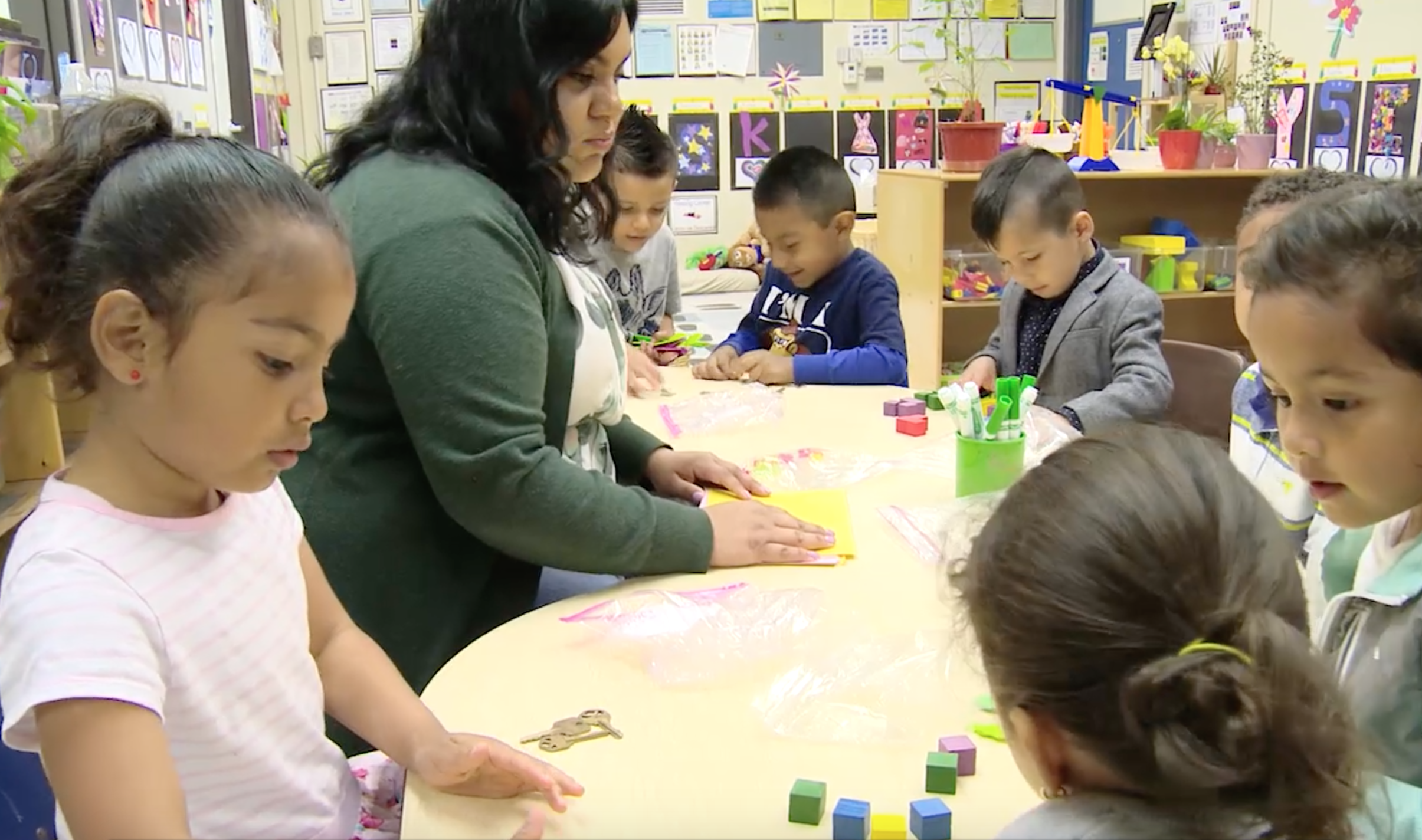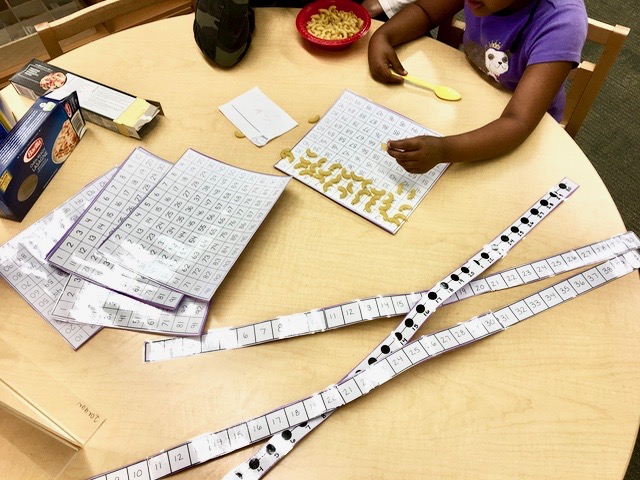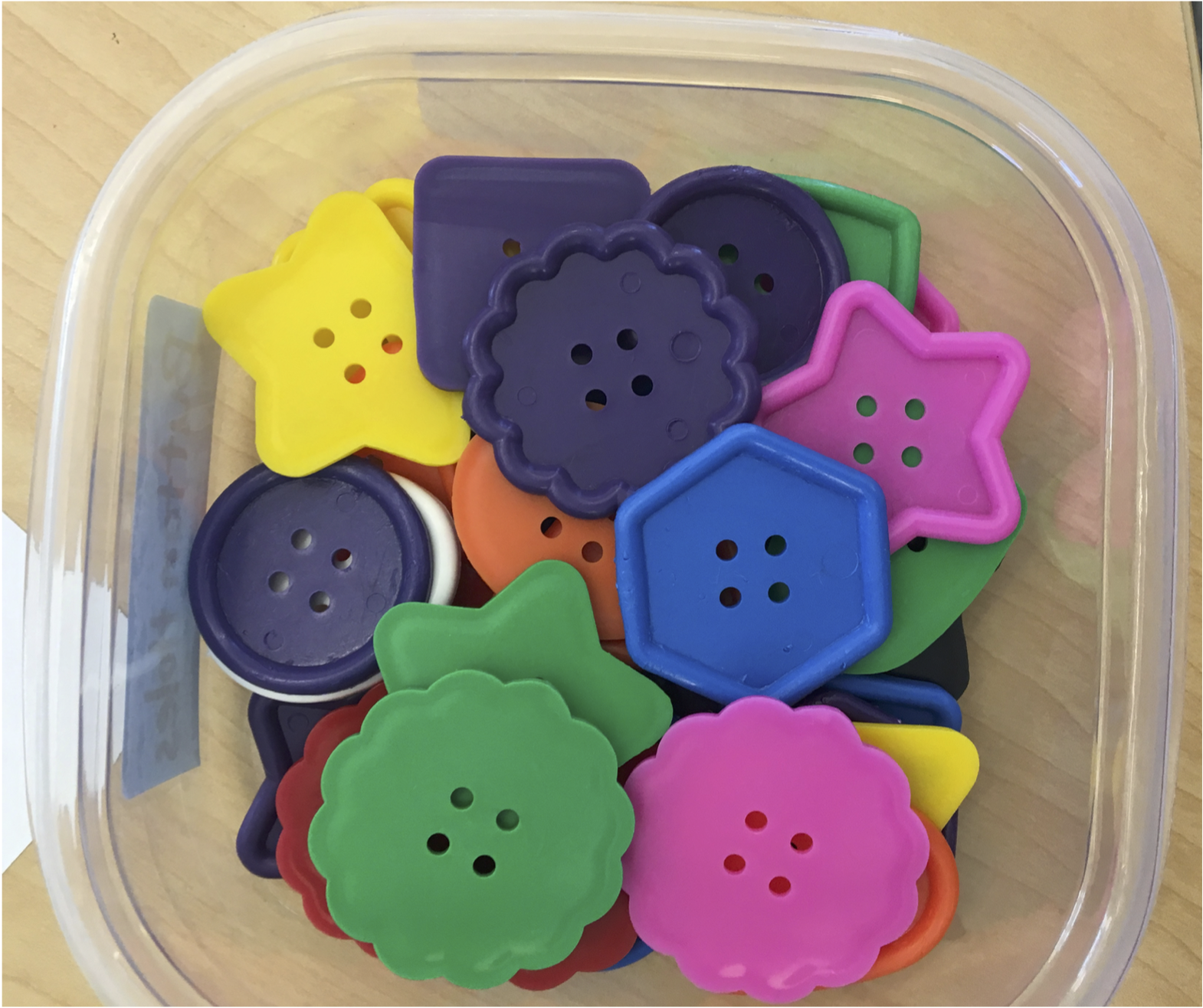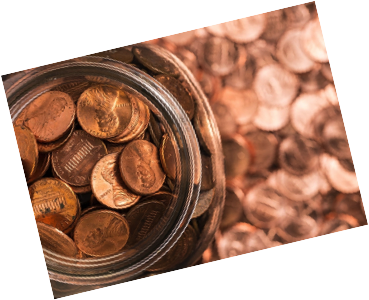Counting Collections Overview is a resource that provides a set of activities designed for teacher educators to begin to engage participants in the activity of Counting Collections. They have been developed to provide support for connecting the content of counting, children’s thinking in counting, and pedagogy in classroom practice.
by Megan Franke
The Counting Collections resources were updated and reorganized in August 2018. Many of the activities can be found here below, including "What do we mean by Counting Collections?", "Counting Large Collections", "Counting Small Collections", and "Representing Collections". Visit Going Deeper with Collections and Ideas for Engaging Participants for other activities previously included here.
What do we mean by Counting Collections?

Counting Collections is an activity in which we ask young children to do the following:
- count to figure out how many are in a "collection" of objects (a set of old keys, teddy bear counters, rocks collected from the yard, arts and crafts materials, etc.)
- make a written representation of what they counted and how they counted it
Similar to other kinds of counting activities, the goal is to engage students in coordinating the various aspects of counting in order to find out how many are in the given set of objects. What might be different about Counting Collections, however, is that children are encouraged to count and represent in ways that make sense to them without an adult doing a demonstration first. As children count, they might move objects in and out of containers, organize in a line, sort into groups by color, slide from one pile to another, etc. As children represent, they might trace the objects, make a series of small marks and place the objects on top to make sure they match, write a sequence of numerals, etc. Additionally, "collections" often have more objects than are usually given to young children (such as a collection of 21 colorful dinosaurs) which often encourages children to organize and to count further in the counting sequence.
Mathematical content: counting principles
Children’s mathematical thinking: the development of counting principles
Teaching: supporting without telling
Using Counting Collections to Support Teacher Learning
Counting Collections can be used in preservice or inservice contexts to support teacher learning. Counting Collections is a powerful tool for teacher learning because the same counting task that is used in professional development is also used in classrooms to support child and teacher learning. The more teachers count collections with children the more they learn.By engaging your participants in Counting Collections in a similar way to how they will engage their children, the participants' ideas can be used to outline the trajectory of children’s thinking, and to detail how to support learning. You can use the participants’ counting of collections, student work, and videos of children to help them learn how to build on a child's existing ideas of the counting principles.
Below are some activities designed for teacher educators to use in professional development and early childhood education course settings to begin to engage participants in the activity of Counting Collections. As they engage with these activities, the goal is for participants to detail the practice of engaging children in counting collections.
- Recognize and support the counting principles.
- Identify how children’s counting ideas develop.
- Develop pedagogical moves that support children to share their thinking.
- Develop pedagogical moves to provide support for children without telling.
Counting Large Collections

Counting collections with larger sets of objects (80-200) is our starting point for this activity. Participants are asked to count, consider the details of counting, and consider what one needs to know and understand in order to count. The goal of this activity is to allow participants to (a) work through underlying aspects of counting, (b) consider the role of organizing objects (sorting, making piles) to count, (c) see how to extend work on counting beyond the counting sequence and (d) talk to each other about what they are thinking.
This is a suggested opening activity for engaging participants in Counting Collections. Asking participants to count larger collections together—collections that require a bit of planning and coordination among partners—gives them the opportunity to experience this activity as a learner as well as the range of mathematics that might be available within the task that extends beyond the scope of early math ideas.
Count a collection with a partner
Participants begin by working with a partner to find the total number of objects in their collection.
Gallery walk
Partners then participate in a "gallery walk" in which they try to figure out how their peers counted, by examining the way they organized the objects. If notes were taken participants are asked to leave them on their work area for others to see.
Group share
After the gallery walk participants are asked to discuss and share what they noticed about the range of ways participants counted their collections. These responses are recorded on a board; some participants may respond by describing the process. For example, "The noodles are easy to put in cups," or "What they count matters." Others may note the math: "I noticed that some people counted by ones and others counted by ones and tens." Encourage them to be specific.
Connecting to the classroom
It is important for participants to connect their counting of collections to their work with children. End with a follow-up discussion where participants respond to the question "What kind of mathematical opportunities do children have when counting collections? What math are they working on?" Record the participants' responses. Encourage a range of responses.
1:1 correspondence
Cardinality
Place value
Grouping
Adding
Skip counting
Sorting
Patterns
Equivalence
Counting Small Collections

This activity can be done on its own to support participants in detailing the counting principles. It also nicely follows Counting Large Collections as participants build from their own experience doing the task to consider what young children learn from counting collections.
Counting Sequence
There is an ordered sequence of number names. Counting involves using the same sequence each time, starting with one. Extending the counting sequence is accomplished by repeating certain aspects of the previously used numbers in a structured way (according to our base-ten number system).
One-to-One Correspondence
Exactly one number from the counting sequence is assigned to each object in the collection.
Cardinality
The last number assigned to an object in counting the collection indicates the total quantity of objects in the collection.
Count a small collection and discuss
Have participants begin by counting a small collection of 11 to15 objects, thinking about what young people have to know in order to count it. It is important to record on chart paper what participants respond to the question, “What do children need to know?” Responses might include: knowing the counting sequence; count the whole group; one-to-one correspondence; cardinality. (Note that some children may understand cardinality but not one-to-one correspondence while others may not know much of the number sequence but do understand one-to-one correspondence.)
Working on the counting principles
Follow the discussion described above with a partner activity and discussion. Choose a counting principle (knowing the counting sequence, one-to-one correspondence, or cardinality). Ask the participants to count the entire collection, but doing so as if they did not understand the principle. What if they had partial understanding? Have the participants work in pairs, figuring out and demonstrating each principle.
Combining the counting principles
Now rather than focus on one principle, have participants use all the principles in relation to each other. What would it look like to know some of the counting sequence, but not understand one-to-one correspondence and cardinality? Or to know some of the counting sequence, and some one-to-one correspondence and some cardinality? Or know the counting sequence and cardinality, but not one-to-one correspondence? Use a range of possibilities so that participants see that the principles are not "all or nothing," and do not develop in a set sequence.
Connecting to practice
Ask participants what they would do to support a child who did not understand a particular counting principle. Choose one set from above and ask them to generate different ways that they could support the child. Make sure you generate more than one possible way to support.
Use video to support engagement
Engage with videos of young children counting collections to support participants to attend to the details of children's thinking as they count. You might choose to start with videos of Scarlett, Nicole, Aubree, or Loralei.
Counting sequence: Use movement and song to work on the counting sequence.
One-to-one correspondence: Have students move the counters across the table or count them into a container (which slows the process).
Cardinality: Make sure you ask "how many?" If they don't know, count together and note the last number you said and push them all together.
Representing Collections

A major component of Counting Collections is to ask children to represent their thinking on paper. We might ask children to draw a picture of their collection, show how they counted, record their collection, etc. This activity engages participants around ideas of representation, why it is important for young children, and how to support it over time.
This activity should be used after participants have engaged with Counting Collections (such as Counting Large Collections and Counting Small Collections) and developed a sense of what the activity is, what mathematical opportunities are available, and how young children might engage and learn as they count. This activity builds on participants' understanding of counting objects to support representation.
Count again and record
Invite participants to count a collection (again, since they have likely just done so during another activity). They might be inspired to try to count the same collection a different way, based on what they have learned from others. This time as they count, make sure participants have a recording sheet (you can download one below) to create a representation of their count. Their representation should show more than just their total amount; it should communicate how they counted. Circulate among the participants and prompt them to include details of their counting strategies in their representations.
Small group sharing
Encourage participants to share in small groups based on these prompts:
- What did you do in your second count that was different from your first count?
- What happened when you tried to record? What did you notice about recording your count? What do you notice about others' recordings?
- What do young children need to think about as they record their count?
Whole group discussions
Bring the whole group back together and ask participants to share highlights and questions from their small group discussions. Invite participants to consider why we might ask young children to represent and why it is important for mathematical learning. Then, show some work samples from children (included in the powerpoint below; you do not need to show all slides). For each sample, ask participants to talk to a partner about what they notice in the representation and what they think the child did. Have them share these observations with the whole group and build from them to focus the conversation on 1) what they think children know and can do, and 2) how a teacher might follow up with this child and why. There are notes in the slides (download below) that provide some prompts to help you facilitate the discussion.
After viewing multiple samples of children's work, revisit the opening conversation about why it is important for young children to represent their thinking.
Use video to support engagement
Watch an example of how Ms. Gaxiola supports Penelope in making connections between her representation and physical collection here. Engage participants in the reflection questions listed after the video.
Visit Going Deeper with Collections for more ideas about how to deepen participants' understanding and engagement with Counting Collections. See also Additional Counting Videos and Classroom Videos: Counting for video resources of young children counting collections.
For more support ideas and additional videos, see Young Children's Mathematics: Cognitively Guided Instruction in Early Childhood (Carpenter, Franke, Johnson, Turrou, & Wager, 2016).



